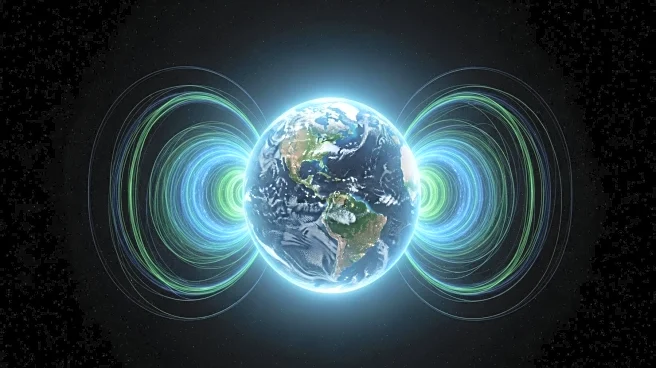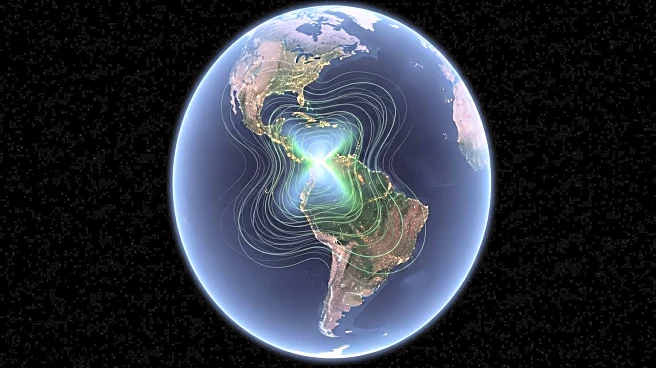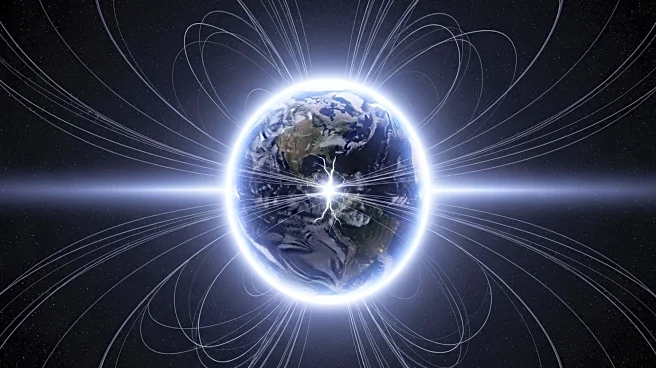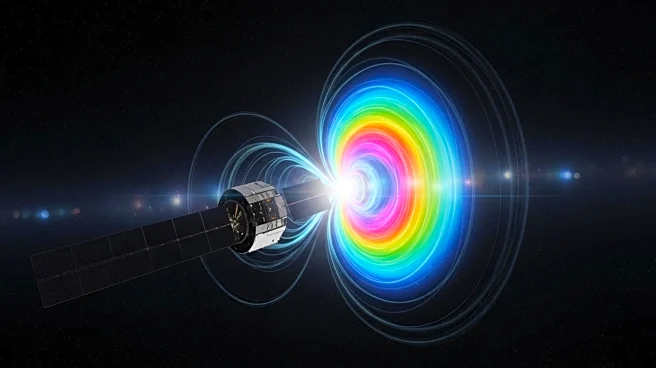What is the story about?
What's Happening?
Satellite data collected over more than a decade has revealed that a weak spot in Earth's magnetic field, known as the South Atlantic Anomaly, is growing. This anomaly, located southeast of South America and southwest of Africa, results in higher doses of cosmic radiation affecting satellites passing over the area, potentially causing technical issues. The European Space Agency (ESA) has studied the anomaly using Swarm satellites, which measured the planet's magnetic signals from 2014 to 2025. The data indicates that the anomaly has expanded significantly, with different parts changing at varying rates.
Why It's Important?
The expansion of the South Atlantic Anomaly is significant because Earth's magnetic field plays a crucial role in protecting the planet from cosmic radiation and charged particles from the sun. Changes in the magnetic field can impact satellite operations, leading to potential disruptions in communication and navigation systems. Understanding these changes is vital for developing strategies to mitigate their effects on technology and infrastructure. The findings also contribute to scientific knowledge about Earth's geomagnetic processes and their implications for global systems.
What's Next?
The ESA plans to continue monitoring the Earth's magnetic field using Swarm satellites, aiming to extend the data record beyond 2030. This ongoing research will provide further insights into the dynamics of the magnetic field and its anomalies. Scientists will continue to investigate the causes of the anomaly's expansion and explore potential solutions to minimize its impact on satellite operations. The research may also inform future technological advancements in satellite design and radiation protection.
AI Generated Content
Do you find this article useful?













